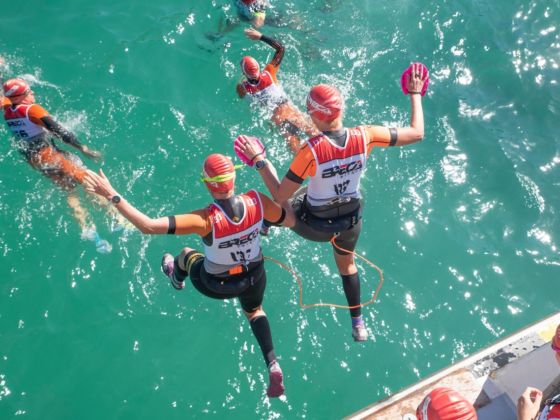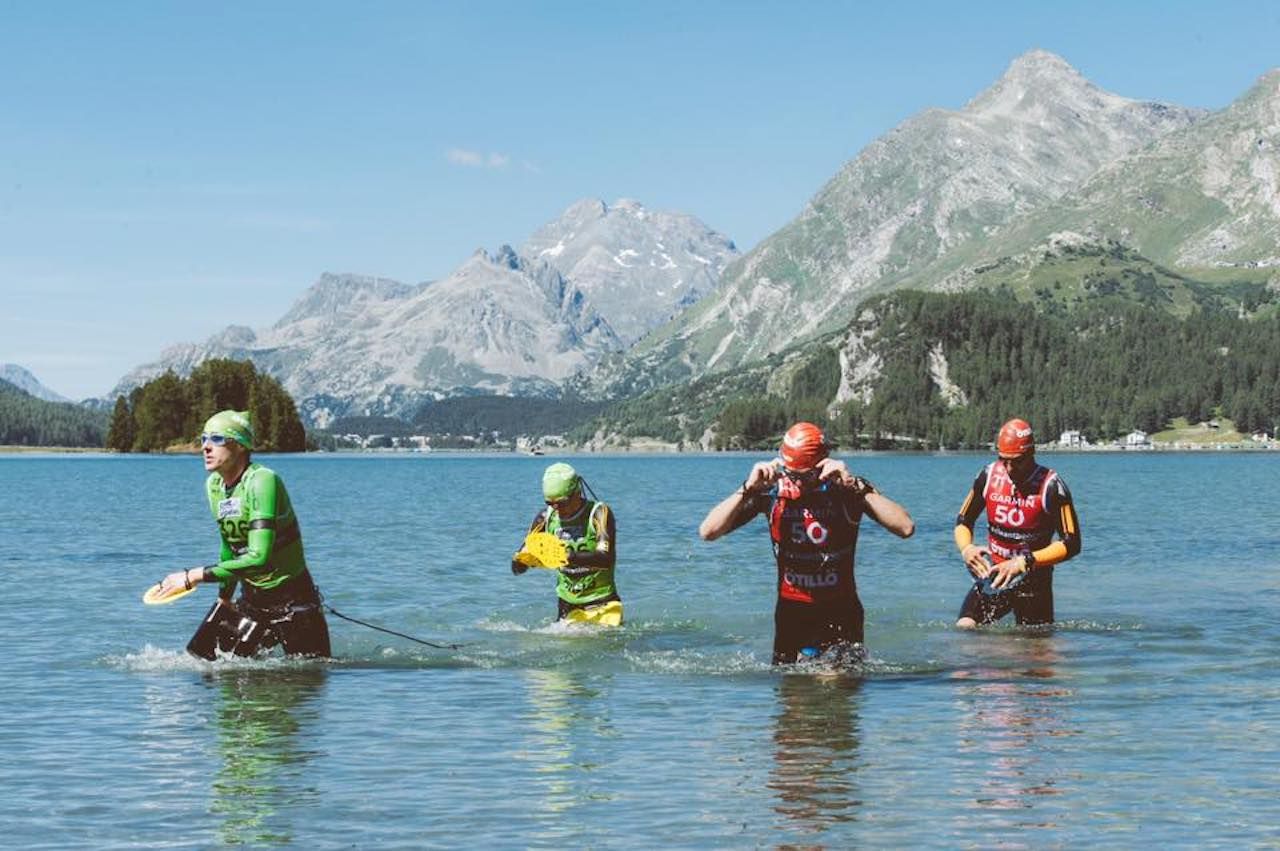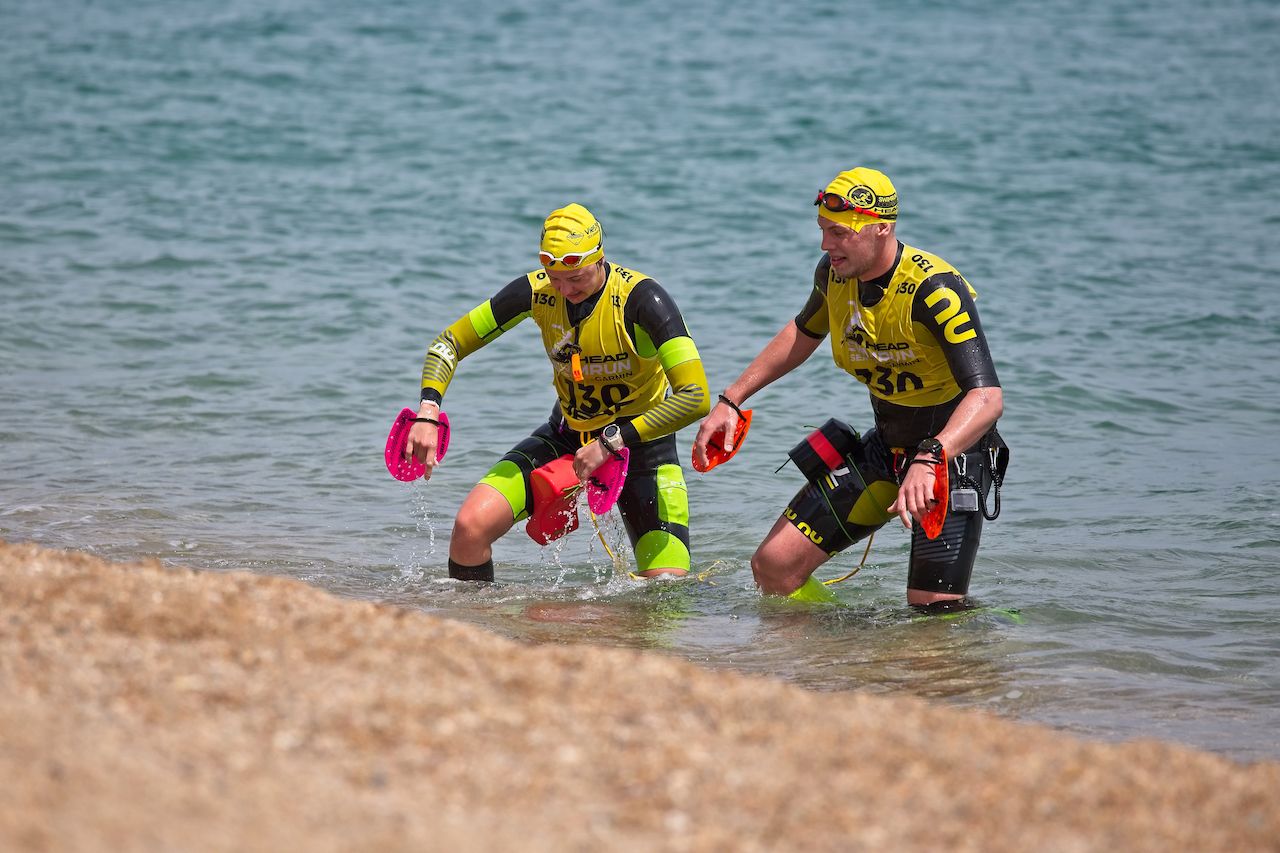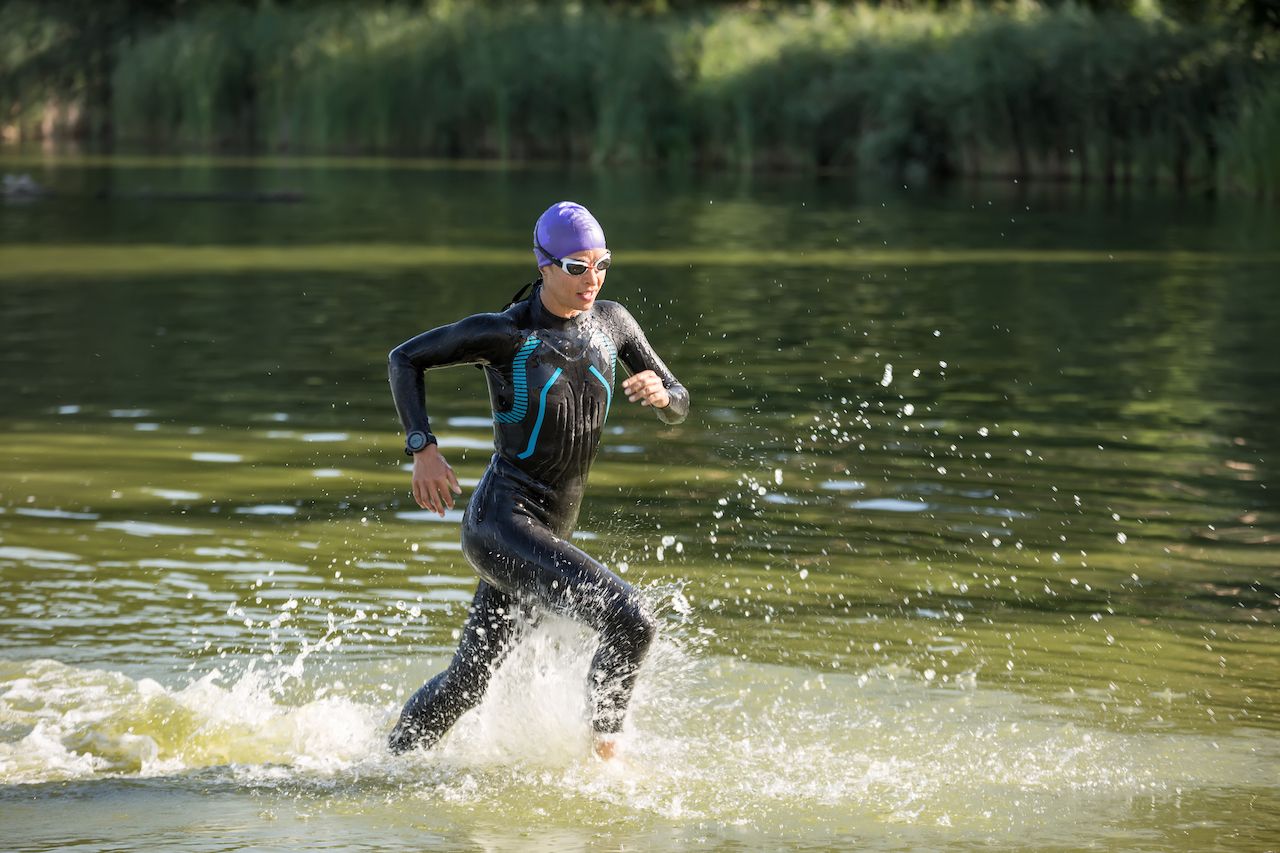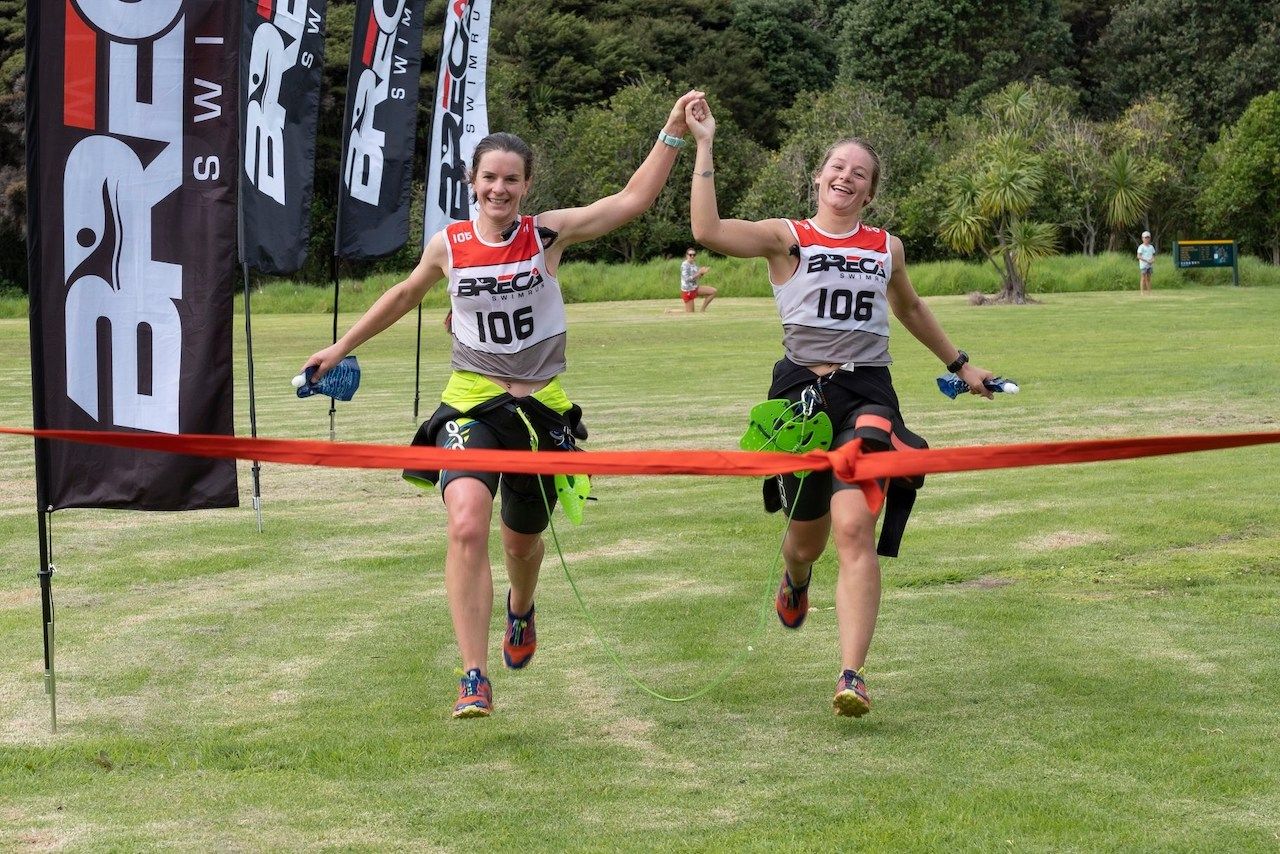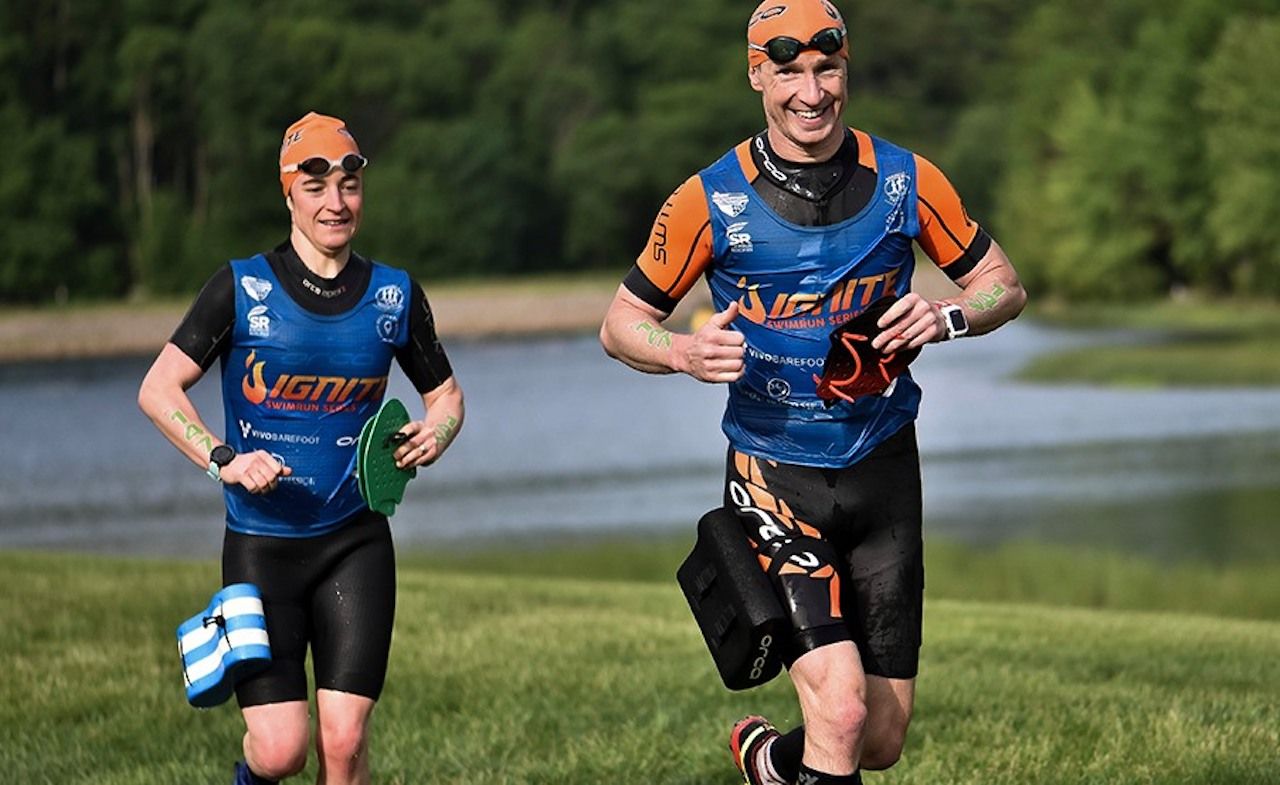It’s hard to believe that one of the world’s most challenging endurance competitions was invented at closing time in a hotel bar. But that’s exactly what happened in Sweden in 2002, when four friends challenged each other to make it from the bar they were in on one island to another on an island over 46 miles away in 24 hours. Swimrun was born.
Now, 17 years later, swimrun competitions take place in some of the world’s most picturesque areas of natural beauty — from the emerald-colored waters of the Mediterranean and the herb-scented hills of Croatia to the deep waters of the South Pacific and the rugged trails of New Zealand. Working in teams of two, athletes run and swim the different stages continuously — running in their wetsuits, swimming in their running shoes, and carrying their food and any other equipment they may need.
